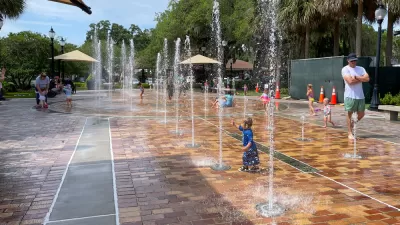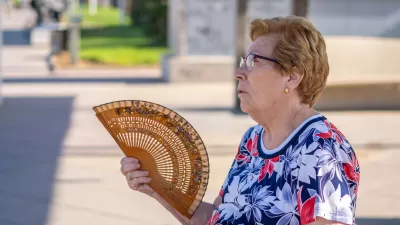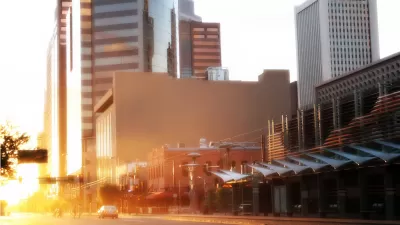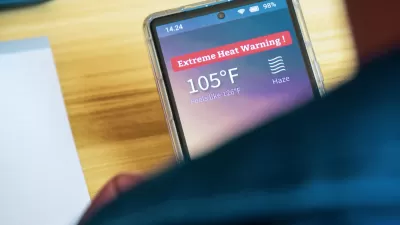As extreme heat threatens infrastructure and public health, municipal ‘heat officers’ work to develop cooling strategies to keep urban residents safe from increasingly hot temperatures.

“About a fifth of the most populated cities in the world could warm by more than 4°C by 2050,” writes Michaela Haas in Next City. In the United States, an estimated 12,000 people die each year from heat-related causes. Haas profiles two of the nation’s first ‘heat officers,’ Marta Segura in Los Angeles and Jane Gilbert in Miami-Dade County, who are tasked with developing strategies for cooling their cities and reducing the impact of extreme heat.
To address the urgency of the threat quickly, Segura is working on some ‘low-hanging fruit’ policies that can make an immediate difference, such as “a campaign to educate Angelenos about the risks and first signs of heat-related illnesses; air conditioning units for underserved communities; and a ‘cooling network’ of shops, department stores and fast-food chains at which people can come in and cool down, ‘so that everybody who starts feeling overheated on their way to the bus stop knows: I can get a glass of cool water here and sit down in a cooled space to recover at no cost.’”
In Miami, Gilbert plans to increase tree canopy in the city’s most vulnerable areas and supporting homeowners and renters in retrofitting their homes and purchasing efficient cooling systems. Miami and Los Angeles have also banded together with 23 other cities in the “cool roadways partnership” to negotiate lower prices for cooling roadway materials.
To help cities mitigate the impacts of heat, the C40 Cool Cities Network has created an ‘urban cooling toolbox’ that addresses “Green infrastructure (such as trees, green roofs, permeable pavements), blue infrastructure (drinking fountains, public swimming pools and other forms of water cooling), gray infrastructure (cool roofs, cool pavements, passive cooling in buildings), communication (outreach, cooling centers and campaigns), policy (climate design guidelines, heat emergency response plans, cooling tax rebate programs) and urban development (urban geometry, building materials).”
FULL STORY: How America’s First ‘Heat Officers’ Are Cooling Miami and Los Angeles

Planetizen Federal Action Tracker
A weekly monitor of how Trump’s orders and actions are impacting planners and planning in America.

Congressman Proposes Bill to Rename DC Metro “Trump Train”
The Make Autorail Great Again Act would withhold federal funding to the system until the Washington Metropolitan Area Transit Authority (WMATA), rebrands as the Washington Metropolitan Authority for Greater Access (WMAGA).

DARTSpace Platform Streamlines Dallas TOD Application Process
The Dallas transit agency hopes a shorter permitting timeline will boost transit-oriented development around rail stations.

Renters Now Outnumber Homeowners in Over 200 US Suburbs
High housing costs in city centers and the new-found flexibility offered by remote work are pushing more renters to suburban areas.

The Tiny, Adorable $7,000 Car Turning Japan Onto EVs
The single seat Mibot charges from a regular plug as quickly as an iPad, and is about half the price of an average EV.

Supreme Court Ruling in Pipeline Case Guts Federal Environmental Law
The decision limits the scope of a federal law that mandates extensive environmental impact reviews of energy, infrastructure, and transportation projects.
Urban Design for Planners 1: Software Tools
This six-course series explores essential urban design concepts using open source software and equips planners with the tools they need to participate fully in the urban design process.
Planning for Universal Design
Learn the tools for implementing Universal Design in planning regulations.
Municipality of Princeton
Roanoke Valley-Alleghany Regional Commission
City of Mt Shasta
City of Camden Redevelopment Agency
City of Astoria
Transportation Research & Education Center (TREC) at Portland State University
US High Speed Rail Association
City of Camden Redevelopment Agency
Municipality of Princeton (NJ)





























